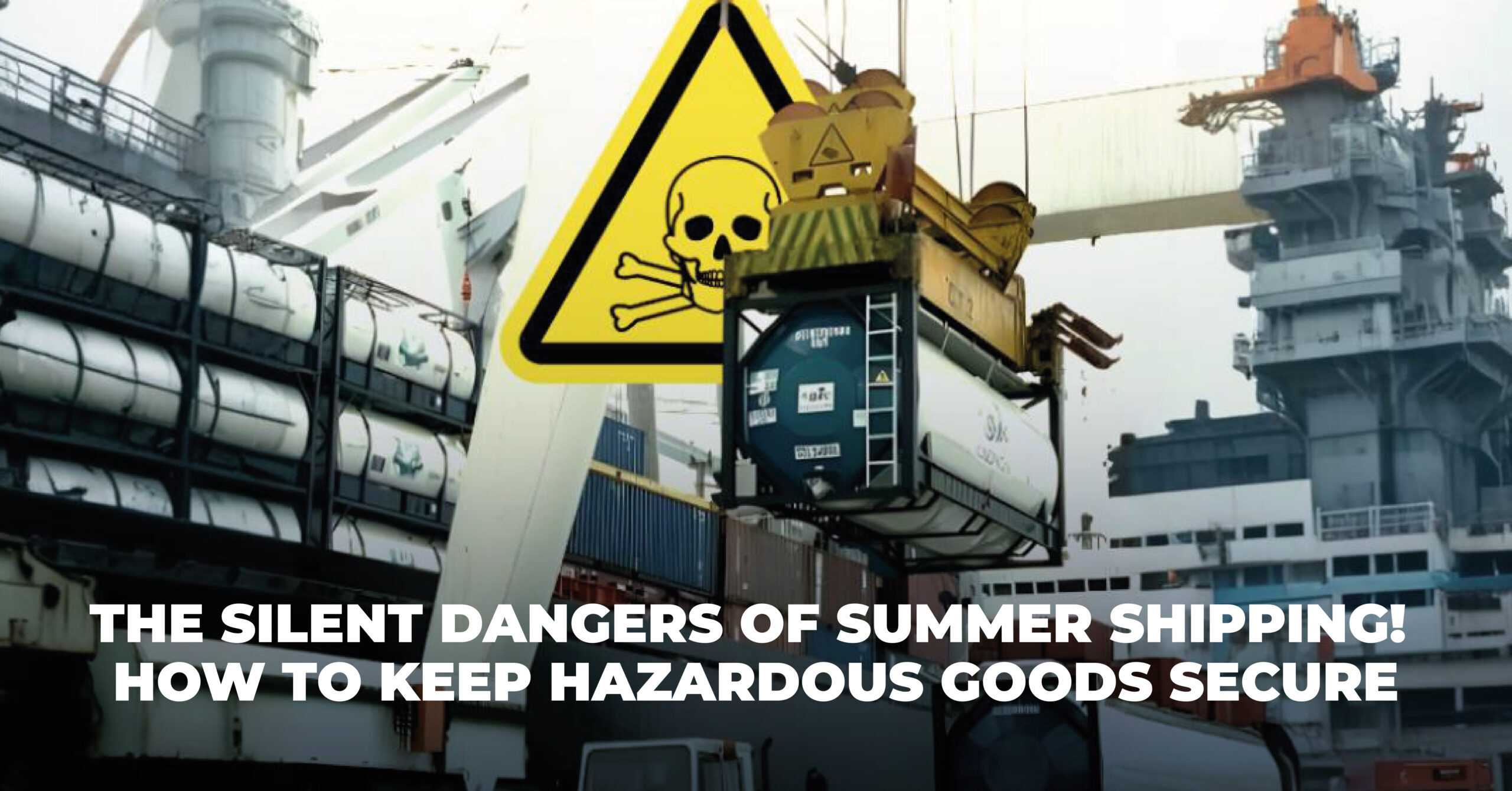Shipping dangerous goods (DG) by sea during the summer months presents a unique set of challenges. The combination of high temperatures, humidity, and unpredictable weather conditions can significantly increase the risk of incidents at sea. Recognizing these hazards and taking proactive measures is essential to ensure the safe and compliant transport of such sensitive cargo.
Extreme Heat is perhaps the most concerning risk during summer shipping. As temperatures rise, so does the internal pressure within containers carrying chemical substances, gases, or flammable materials. This can result in leaks, container ruptures, or, in the worst-case scenario, fires or explosions. Certain chemicals become unstable or reactive when exposed to prolonged heat, increasing the possibility of hazardous situations.
Humidity adds another layer of risk. Moisture can seep into containers, leading to the corrosion of drums, barrels, and other packaging. For DG materials sensitive to moisture—such as oxidizers or hygroscopic substances—this can result in contamination, decomposition, or even unintended reactions. Additionally, humidity can weaken packaging materials, compromising the overall integrity of the cargo.
Summer storms and rough seas further complicate DG logistics. Sudden weather changes can delay shipments, reroute vessels, or damage poorly secured cargo. Rough seas may shift containers, increasing the risk of spillage, leakage, or collision damage between units carrying incompatible materials. Strong winds and lightning also pose a direct threat to volatile cargo on deck.
Fire risks are heightened in summer. With flammable goods such as fuels, aerosols, and solvents being commonly shipped, poor ventilation combined with ambient heat can create ideal conditions for ignition. A minor spark or friction during handling could quickly escalate into a full-scale emergency.
Human error is another factor that becomes more prominent in hot conditions. Crew fatigue, heat stress, and reduced concentration can lead to mistakes during loading, unloading, labeling, or stowage. In the context of DG cargo, even a small lapse in protocol can have severe consequences.
To mitigate these risks, shipping companies and logistics providers must adopt a range of safety measures:
- Monitor temperature and humidity levels continuously during storage and transit. Temperature-controlled containers or insulated packaging may be necessary for sensitive DG.
- Secure cargo properly using specialized lashing and stowage techniques. Segregate incompatible materials and label all packages clearly as per IMDG (International Maritime Dangerous Goods) regulations.
- Train crew members and shore-side personnel regularly on safe DG handling procedures, summer-specific hazards, and emergency response plans.
- Plan routes and schedules carefully to avoid known weather hotspots or storm-prone regions during peak summer months. Real-time weather tracking and contingency planning can help avoid delays or incidents.
- Improve ventilation inside cargo holds and containers carrying flammable or reactive substances.
By staying vigilant and implementing seasonal safety protocols, shippers can significantly reduce the risks associated with transporting dangerous goods in summer. With proper planning, equipment, and awareness, the maritime transport of DG can remain safe, compliant, and efficient—even during the most challenging months of the year.






